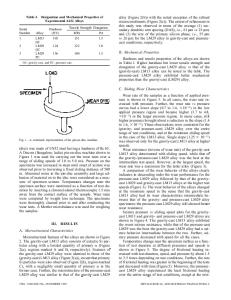Size, Shape, and Crystallinity of Luminescent Structures in Oxidized Si Nanoclusters and H-Passivated Porous Si
- PDF / 611,292 Bytes
- 9 Pages / 414.72 x 648 pts Page_size
- 7 Downloads / 328 Views
to account for the observed variations in luminescence peak energy. Figure 3 argues against this suggestion, showing that the suboxide component, isolated by subtracting the outer core of Si0 2 and the inner core of Si (represented here by a por-Si sample [11], see below), is experimentally indistinguishable in the m and vs nanocrystals, both in edge position, i. e., chemical composition, and relative edge jump, i. e., thickness (measured to be 1.5 ± 0.5 A). Identical results are also obtained for the /and s nanocrystals. NEXAFS and ir Absorption from Por-Si Normalized NEXAFS data from por-Si appear in Fig. 1(b), along with comparison data from c-Si and HF-rinsed a-Si. For clarity, we show only two of the four differently prepared samples studied here, labelled C [2] and B [7]. The qualitatively closer resemblance of the por-Si data to that of c-Si rather than a-Si, and the lack of (Si-O)related absorption at -1842 - 1848 eV, already noted elsewhere [7], are apparent. As in the case of the Si nanocrystals, there have been suggestions that an oxygencontaining Si species is responsible for the observed visible luminescence in por-Si. Even freshly prepared por-Si that has been minimally exposed to air contains oxygen in the form of physisorbed water trapped in the pores. This oxygen goes undetected in the Si K-edge NEXAFS data because the samples from which the x-ray absorption measurements are made are not exposed to exciting radiation, i. e., the oxygen remains in the form of water and does not react with the Si. By contrast, the photoluminescence measurements necessarily involve exciting radiation, which dissociates the water and leads to formation of Si-O species. That this process of photo-induced oxidation occurs is not the issue; rather, it is whether the so-generated Si-O species is related to the observed photoluminescence. We have investigated this point using transmission ir-absorption measurements to monitor the dependence of photo-oxidation as a function of radiation exposure. The top of Fig. 4 shows transmission data from two non-irradiated, differently prepared por-Si samples, B and C. The bottom traces are difference spectra from those samples before and after exposure to 4 min of 390-nm radiation from a high pressure Xe lamp at -2 mW/cm2 , conditions identical to those used in our photoluminescence measurements. In both samples there is enhanced absorption around 1100 cm 1 , representative of Si-O-Si stretching frequencies, and a corresponding loss of absorption around 2100 cm 1 , representative of Si-H stretching frequencies. Expanded views of these regions in the porSi(C) sample are shown in Fig. 5 for different exposure times. A clear monotonic trend with exposure is observed for the Si-O and Si-H species (this trend saturates after- 100 sec). 410
Significantly, however, the luminescence peak intensities and energies remain constant with radiation exposure. We therefore conclude that there is no correlation between the photo-oxidized species and the observed photoluminescence. I
I
I
I
I
before
Data Loading...








